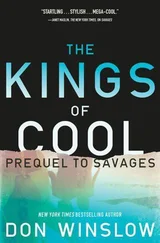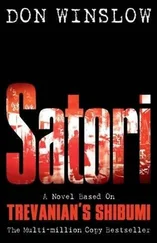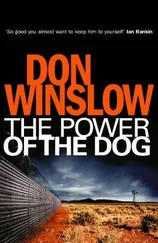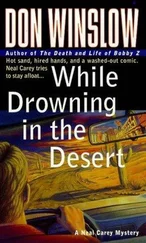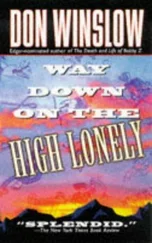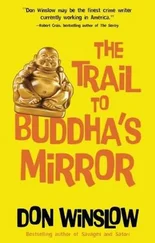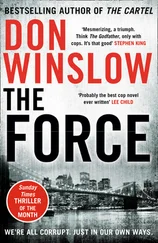“Yeah.”
Ric sees his father approaching.
But it’s not Ric he wants to see.
Núñez says, “Iván, we should talk.”
“We should,” Iván says.
Ric sees the look on his face, the smile, knows that this is the moment he’s been waiting for.
His coronation.
Núñez glances down at his son and says, “In private.”
“Sure.” Iván winks at Ric. “I’ll be back, bro.”
Ric nods.
Leans back in the chair and watches his best friend and his father walk away from him.
Then he does have a memory of Adán.
Standing on the side of a dirt road in rural Durango.
“Look around you,” Adán said. “What do you see?”
“Fields,” Ric said.
“ Empty fields,” Adán said.
Ric couldn’t argue with that. On both sides of the road, as far as he could see, marijuana fields lay fallow.
“The US has, de facto, legalized marijuana,” Adán said. “If my American sources are right, two or more states will soon make it official. We simply can’t compete with the local American quality and transportation costs. Last year we were getting a hundred dollars for a kilo of marijuana. Now it’s twenty-five. It’s hardly worth our growing the stuff anymore. We’re losing tens of millions of dollars a year, and if California, for instance, legalizes, the loss will be in the hundreds of millions. But it’s hot out here. Let’s go get a beer.”
They drove another ten miles to a little town.
A lead car went in first, made sure it was all clear, and then went into a tavern and emptied it out. The nervous owner and a girl who looked to be his daughter brought in a pitcher of cold beer and glasses.
Adán said, “Our marijuana market, once a major profit center, is collapsing; meth sales are falling; cocaine sales have flattened. For the first time in over a decade, we’re looking at a fiscal year of negative growth.”
It’s not like they were losing money, Ric thought. Everyone there was making millions. But they made less millions than they had the year before, and it was human nature that, even if you’re rich, being less rich feels like being poor.
“The present situation is unsustainable,” Adán said. “The last time this occurred we were saved by the innovation of crystal meth. It became, and remains, a major profit center, but there is small potential for growth that would compensate for our marijuana losses. Similarly, the cocaine market seems to have reached its saturation point.”
“What we need,” Ric’s father said, “is a new product.”
“No,” Adán said. “What we need is an old product.”
Adán paused for dramatic effect and then said, “Heroin.”
Ric was shocked. Sure, they still sold heroin, but it was a side product compared to weed, meth and coke. All their business had started with heroin, with opium, back in the days of the old gomeros who grew the poppy and made their fortunes selling it to the Americans to make the morphine they needed during World War II. After the war, it was the American Mafia that provided the market and bought up as much opium as they could grow for heroin.
But in the 1970s, the American DEA joined forces with the Mexican military to burn and poison the poppy fields in Sinaloa and Durango. They sprayed pesticides from airplanes, burned villages, forced the campesinos from their homes and scattered the gomeros to the winds.
It was Adán’s uncle, the great Miguel Ángel Barrera—M-1—who gathered the gomeros at a meeting similar to this one and told them that they didn’t want to be farmers—farms could be poisoned and burned—they wanted to be traffickers. He introduced them to the Colombian cocaine market and they all became wealthy as middlemen, moving Cali and Medellín coke into the United States. It was also M-1 who introduced crack cocaine to the market, creating the greatest financial windfall the gomeros— now known as narcos —had ever known.
Millionaires became billionaires.
The loose confederation of narcos became the Federación.
And now Adán wants them to make opium again? Ric thought. He thinks heroin is the answer to their problem?
It was insane.
“We have an opportunity,” Adán said, “even greater than crack. A ready-made market that’s just waiting for us to take advantage of. And the Americans have created it themselves.”
The giant American pharmaceutical companies, he explained, had addicted thousands of people to legal painkillers.
Pills.
Oxycodone, Vicodin and others, all opium derivatives, all the fruit of the poppy.
But the pills are expensive and can be hard to obtain, Adán explained. Addicts who can no longer get prescriptions from their doctors turn to the street, where the bootleg product can cost up to thirty dollars a dose. Some of these addicts need as many as ten doses a day.
“What I propose,” Adán said, “is to increase our production of heroin by seventy percent.”
Ric was skeptical. Mexican black tar heroin had never been able to compete with the quality of the purer product that comes in from South Asia or the Golden Triangle. More than doubling production would only lead to massive losses.
“Our black tar heroin is currently around forty percent pure,” Adán said. “I’ve met with the best heroin cookers in Colombia, who assure me that they can take our base product and create something called ‘cinnamon heroin.’”
He took a small glassine envelope from his jacket pocket and held it up. “Cinnamon heroin is seventy to eighty percent pure. And the beauty of it is, we can sell it for ten dollars a dose.”
“Why so cheap?” Núñez asked.
“We make up for it in volume,” Adán said. “We become Walmart. We undercut the American pharmaceutical companies in their own market. They can’t possibly compete. It will more than compensate for our marijuana losses. The yield could be in billions of new dollars. Heroin was our past. It will also be our future.”
Adán, as usual, had been prescient.
In the time since just three American states legalized weed, the cartel’s marijuana sales dropped by almost forty percent. It’s going to take time to complete, but Núñez started to convert the marijuana fields to poppies. Just over the past year, they’ve increased the heroin production by 30 percent. Soon it will be 50 and by the end of the year they’ll reach the 70 percent goal.
The Americans are buying. And why not? Ric thinks now. The new product is cheaper, more plentiful and more potent. It’s a win-win-win. Heroin is flowing north, dollars are flowing back. So maybe, he thinks, the Adanistas are right—Barrera lives on.
Heroin is his legacy.
So that’s a story you could tell.
I had a friend who was a clown. When he died, all his friends came to the funeral in the same car.
—Steven Wright
Their house is a brownstone on Hillyer Place east of Twenty-First in the Dupont Circle neighborhood. They chose it because Dupont is “walkable,” for Marisol; there are coffee shops, restaurants, and bookstores nearby; and Keller likes the historical resonance of the neighborhood. Teddy Roosevelt lived around here; so did Franklin and Eleanor.
And Marisol loved the crepe myrtle tree that grew up to the third-story window, its lavender blooms reminding her of the vivid colors back in Mexico.
She’s waiting up when Keller gets home, sitting in the big armchair by the living room window, reading a magazine.
“We’re a ‘power couple,’” she says when Keller comes through the door.
“We are?” He bends over and kisses her forehead.
Читать дальше



